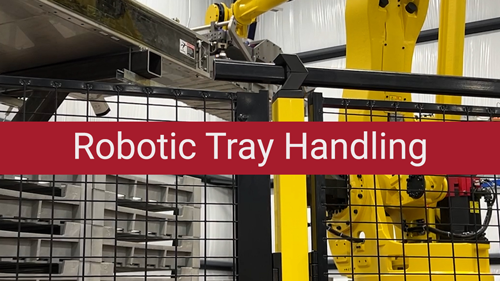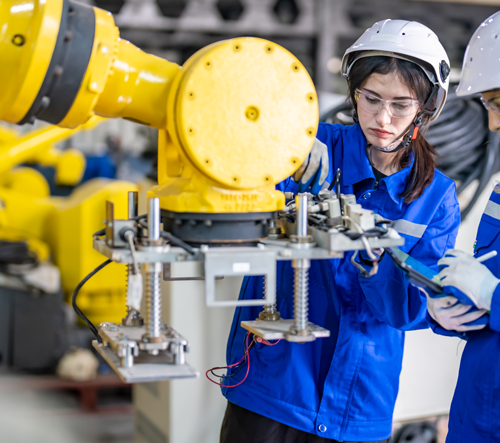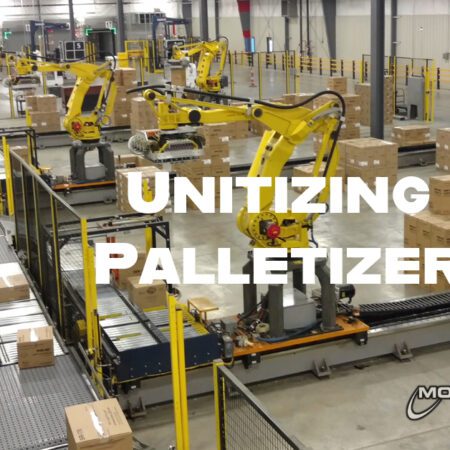Deciding whether to use a robot integrator can be a tough decision. The same robot cell, if you look at just the numbers, can arguably cost less to install with your own engineering and maintenance personnel. Motion Controls Robotics has been building robot systems for manufactures for over 20 years. From our experience, these are 8 things that figure into calculating the true cost of designing and building your own robot cell:
- Depth of Robot Integrator Knowledge, Complexity of Project
A robot cell built by a robot integrator will be developed under the watchful eye of a project manager experienced in building robot systems. The mechanical and electrical engineers designing your robot cell are trained and certified in the robot’s kinematics. Finally, the cell is programmed by a certified robot programmer. While you may have all these people on staff, they may or may not have the skills necessary to complete all the work.
- More flexible cell design options
Since there is less of a learning curve, the right integrator will be able to spend more time making the robot system flexible and even easy to repurpose if and when production needs change. Robot integrators have experience designing systems that efficiently perform multiple processes. The robot system can be designed so that product/part changeovers can be made on the fly by the robot operators.
- End of arm tooling expertise
Robot integrators have experience with designing EOATs with flexibility for multiple product sizes (like a servo gripper) or perform multiple functions. A good integrator may be able to combine functions into a single gripper or handle multiple part 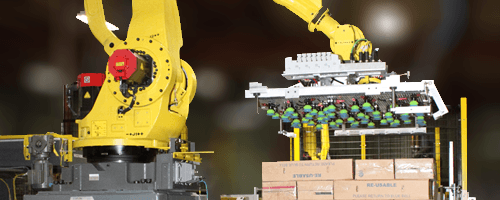 families with a single gripper. Therefore, you can avoid the cost of manual or automatic tool changing. Not only is the design of the tooling important, but the cable management and dress-out to the end of arm tool can affect how efficiently and reliably the robot operates.
families with a single gripper. Therefore, you can avoid the cost of manual or automatic tool changing. Not only is the design of the tooling important, but the cable management and dress-out to the end of arm tool can affect how efficiently and reliably the robot operates.
- Robot Integrators Know the Safety Risks
Robot integrators know and closely follow the Safety Standard. These standards are designed to make sure employees and robots work safely together. Years of experience have given integrators a checklist of problems encountered that they can make sure are not repeated. This knowledge is important to make sure you are taking full advantage of the new technologies and innovations available for your robot system, like FANUC’s Dual Check Safety (DCS) and collaborative robots.

- Continued support and preventative maintenance
Certified integrators offer 24/7 service and support for any installed system. FANUC adds to this the Service First promise that they will have parts available within 24 hours. Having an integrator also gives you the chance to troubleshoot to increase cycle times. Read about FANUC’s Service First program.
- Minimize production interruptions during installation/integration
In most case, it takes 2-3 months to setup a robot system from scratch. If you don’t have extra space in your facility, this could cause a long interruption of production and drive floor space cost you haven’t taken into consideration. Robot integrators setup the system completely in their facility, test and program to specifications, carefully pack, and ship the system to final location. This allows the final setup to be much quicker, with less production downtime.
- Robot integrators provide valuable training to operators and maintenance employees
If you select an integrator like Motion Controls Robotics, we offer training to your employees. This training gets your employees ready to deal with change-overs, the teach pendant or HMI screen, and typical issues that arise – all decreasing downtime for problem solving. Working with an established integrator improves the likelihood that you can receive additional training down the road, should you have a change in personnel. Download MCRI’s Training Pamphlet
- Robot integrators build systems that last
Robot integrators have discovered the best suppliers of quality components allowing for less overall maintenance needs and a long lasting robot system. This is mutually beneficial to the customer 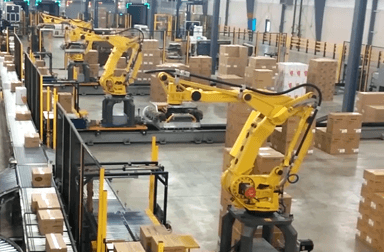 and integrator because robot demand is high and robot integrators do not want to be fixing failed system components such as cameras, sensors, or cabling.
and integrator because robot demand is high and robot integrators do not want to be fixing failed system components such as cameras, sensors, or cabling.
In conclusion, there is more than “just the numbers” that figure into whether to use a robot integrator. Most times, you actually end up spending less money and a lot less time by benefiting from their in-depth knowledge. Certainly, having an integrator work with you on your first system will give you a quick start. This allows you to make an educated decision on future robot cells.
**These are benefits that Motion Controls Robotics, as an exclusive FANUC robot integrator, have discovered over the years of working and speaking with customers. We cannot promise that all integrators and robot manufacturers offer the same experience.

